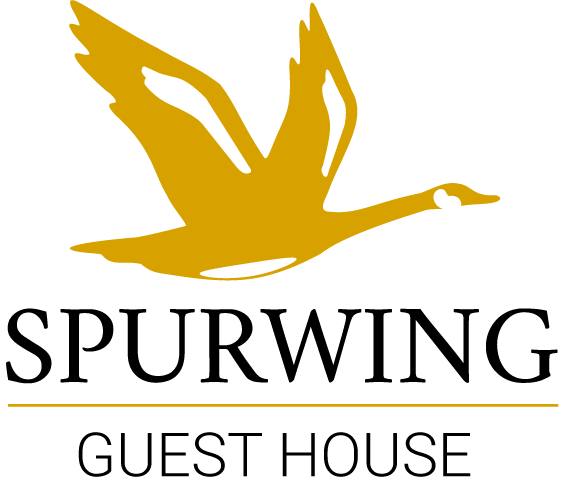If you love nature and wildlife, like we do, then a visit to The Swannery at Abbotsbury is a perfect choice.
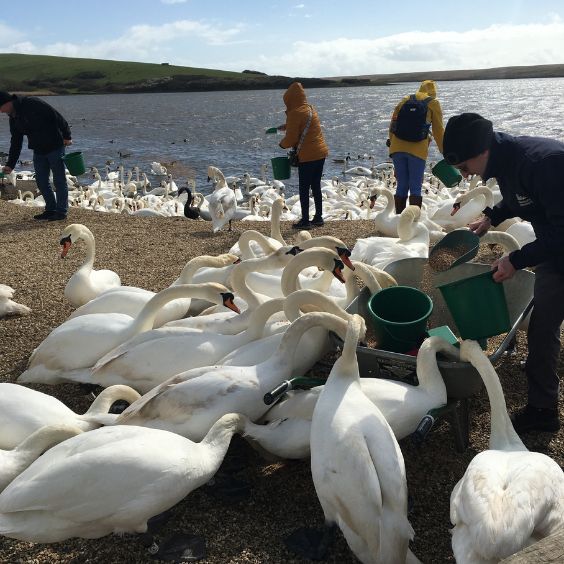 My mother and I visited there in late March. We arrived at midday, just in time for feeding. It was so special! The swans allowed us to walk close by and we fed them with scoops of nutritious food.
My mother and I visited there in late March. We arrived at midday, just in time for feeding. It was so special! The swans allowed us to walk close by and we fed them with scoops of nutritious food.
Having lived next to a canal prior to moving to Dorset, these Mute Swans are certainly friendlier than some of the territorial ones we encountered on the tow path!
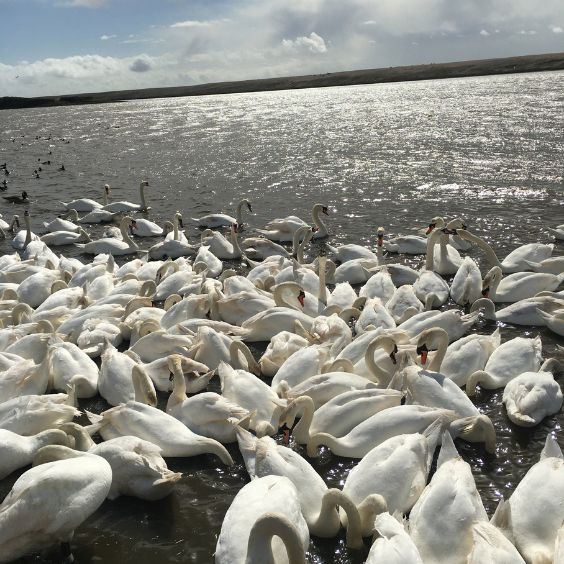 How the Abbotsbury Swannery came about?
How the Abbotsbury Swannery came about?
Abbotsbury Swans have nested on this site for at least 600 years, and it is home to the only managed colony of Mute Swans in the world.
In the 11th century Benedictine Monks built a monastery at Abbotsbury. They are believed to have farmed the swans to provide food for their lavish banquet.
Sir Giles Strangways purchased Abbotsbury Swannery from Henry Vlll in 1543, and it has remained with the same family for over 500 years. It is due to the family’s careful stewardship that this unique colony of free-frying swans continues to thrive.
 A Unique Habitat
A Unique Habitat
The Swannery is located at the western end of The Fleet Lagoon. It is a site of Special Scientific Interest (SSSI). It is the largest lagoon in Britain and is home to a precious community of aquatic plant and animal life. In the middle of the lagoon the conditions perfectly suit the growth of eelgrass, a food favoured by swans.
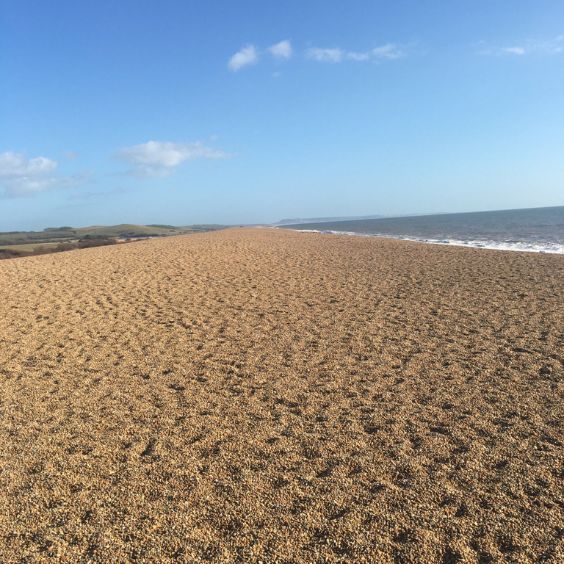 The lagoon lies behind Chesil Beach, which is a 30km long, 200m wide and 15m high bank formed at the end of the last ice age when huge waves gathered up rocks from the seabed and threw them back towards the shore. It is one of the most spectacular storm beaches in the world.
The lagoon lies behind Chesil Beach, which is a 30km long, 200m wide and 15m high bank formed at the end of the last ice age when huge waves gathered up rocks from the seabed and threw them back towards the shore. It is one of the most spectacular storm beaches in the world.
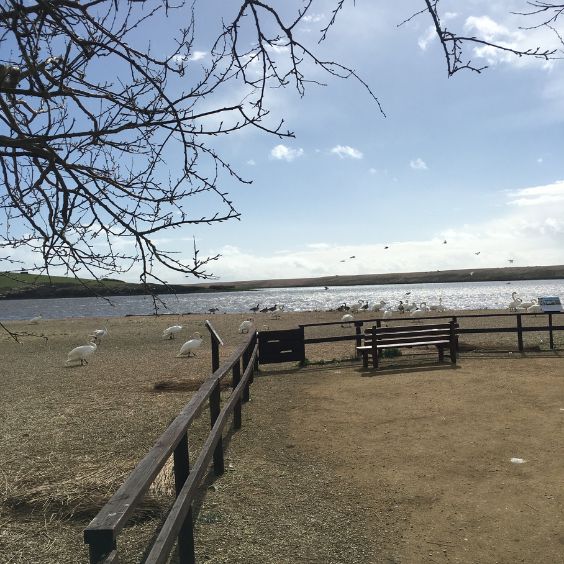 A Visit all Year Round
A Visit all Year Round
Spring
The Swannery has fresh water, reed for nest building, and an ample supply of food nearby – everything a Mute Swan looks for in a nesting site.
The shoreline around the Swannery is fringed with reed. The Swannery staff cut the reed in February to supply nesting material for the swans.
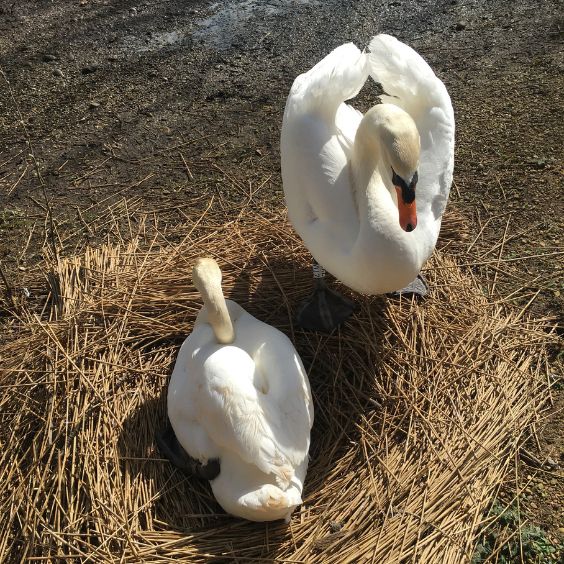 Nest building by the swan parents can take several days. They collect reed, grasses, rushes, leaves, and stems to make a secure nest.
Nest building by the swan parents can take several days. They collect reed, grasses, rushes, leaves, and stems to make a secure nest.
The Abbotsbury Swans, of which there are 150 or so pairs, nest close together. They generally ‘mate for life ‘choosing to nest on the same spot at the Swannery year after year.
Abbotsbury swans allow visitors to walk alongside them even as their eggs hatch. They are very accustomed to people.
The first eggs appear before the end of March with majority of incubation throughout April. The first cygnets hatch in early May and all the hatching is completed by late June.
Cygnets do not recognise their parents when they hatch, they have to learn to recognise them. Swannery staff tag all cygnets and ring all adults so that lost cygnets can easily be returned to their parents.
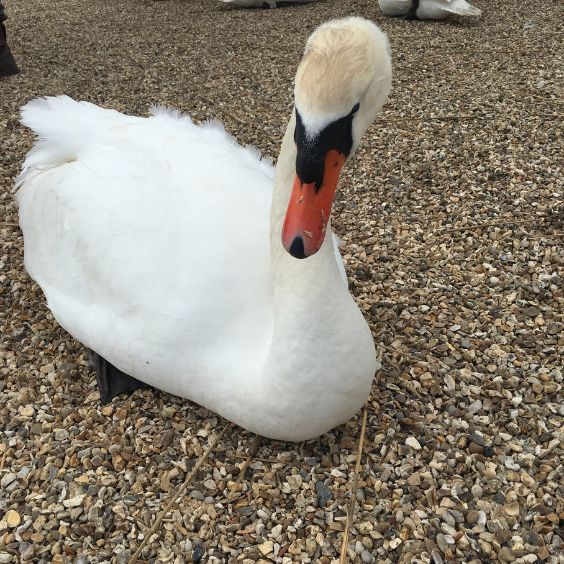 Summer
Summer
Throughout June and July, the adult swans moult their worn and damaged flight feathers. This process takes 6 weeks, and throughout this time they are flightless until their feathers grow.
The cygnets rapidly grow in the summer months and by late September, they are almost the same size as their parents with a 2m wingspan.
Summer migrants such as warblers and terns arrive from Africa to rest on the Fleet Nature Reserve.
Autumn
At this time of year, the number of swans at Abbotsbury slowly increases. Other families and non-breeding birds from around Dorset and neighbouring counties head to The Fleet for the winter.
Thousands of ducks and geese arrive from Scandinavia, Eastern Europe and Russia, drawn by a favourite climate and an abundant food supply.
In Autumn, cygnets begin to fly at approximately 4 ½ months old.
Winter
Over the winter months, the swans at Abbotsbury move further down the 8-mile Fleet to feed on the plentiful eelgrass beds. The Fleet is normally less than one metre deep, so swans can reach eelgrass growing from the bed of the lagoon.
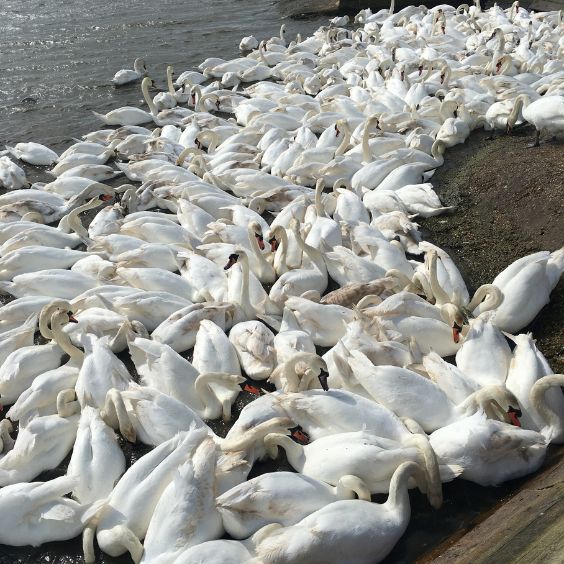 Most of the swans will head to the relatively sheltered bay of the Swannery. Here, staff can keep a watchful eye on the birds and ensure they receive some much needed food until the weather improves.
Most of the swans will head to the relatively sheltered bay of the Swannery. Here, staff can keep a watchful eye on the birds and ensure they receive some much needed food until the weather improves.
Other Useful Questions
- Do all the swans belong to the crown?
No, not at the Swannery. All the swans that originate at Abbotsbury are still owned by the same family that purchased the land from Henry Vlll.
- How long do swans live?
The average age for a Mute Swan is 10 – 12 years but can live up to 30 years.
- How old are cygnets when they turn completely white?
Cygnets turn completely white at the age of 14 months.
- What is the average wingspan of a male swan (cob) at Abbotsbury?
The average wingspan of a male swan (cob) is 2.15m.
- What do the coloured rings mean?
White rings are given to swans that have hatched at Abbotsbury. Yellow rings are given to swans arriving from elsewhere. Occasionally swans with other colonial rings may visit. For example, blue rings are from Devon, green from Somerset and orange from Hampshire.
A day at Abbotsbury Swannery is highly recommended, all year round!
You may also be interested in The Abbotsbury Subtropical Garden which is close by. Please refer to our blog ‘2 Tranquil Dorset Gardens’.
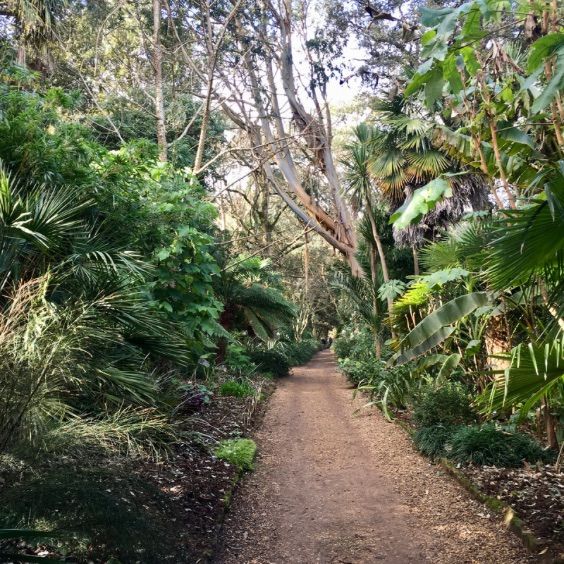 If you have enjoyed reading this blog and would like to learn about latest updates, events in the area or last-minute availability at our Dorset B&B, Spurwing Guest House, then you can subscribe to our mailing list.
If you have enjoyed reading this blog and would like to learn about latest updates, events in the area or last-minute availability at our Dorset B&B, Spurwing Guest House, then you can subscribe to our mailing list.
